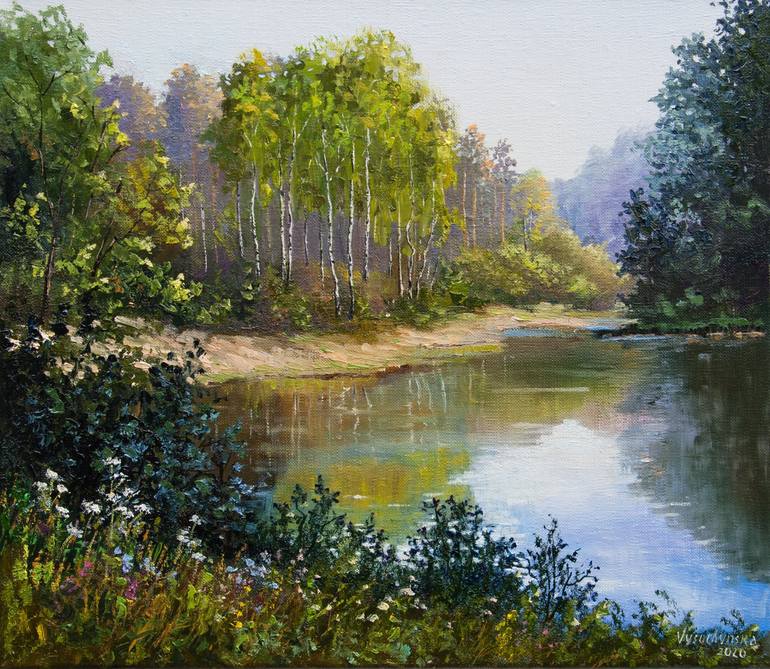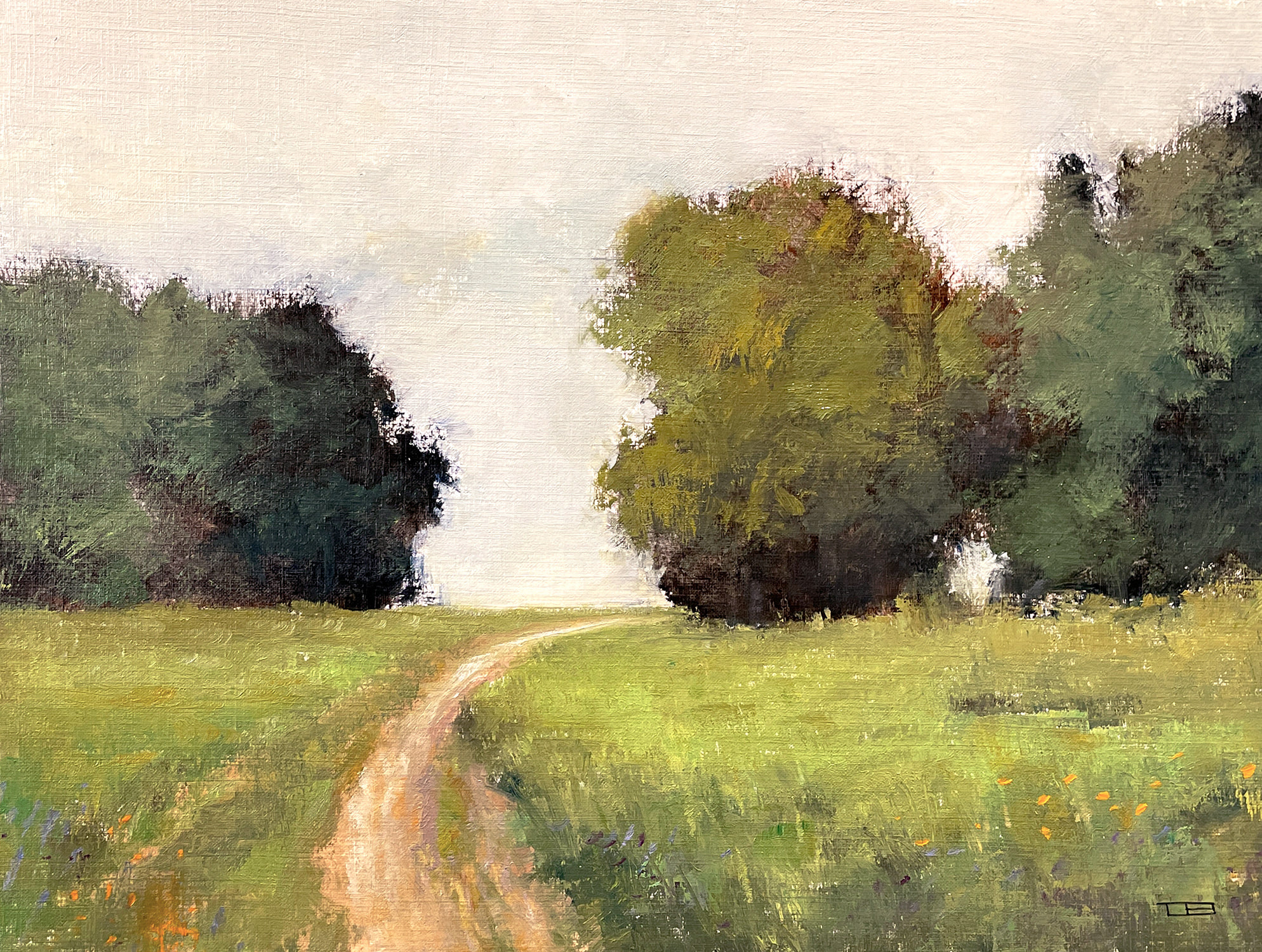Check Out Striking Portrait Oil Paintings for Sale
Check Out Striking Portrait Oil Paintings for Sale
Blog Article
Exploring Everything About Oil Paints: An Overview to Comprehending Their Charm and Value
Oil paints have actually mesmerized audiences for centuries, offering a glance right into the imaginative mastery of various periods. Their abundant history is linked with cutting-edge methods and profound psychological expression. Comprehending the products and techniques behind these artworks can boost recognition. Additionally, the marketplace for oil paints presents possibilities for collection agencies and financiers alike. As one explores this interesting world, the concern arises: what makes an oil paint really valuable?
The Background of Oil Painting: A Trip Through Time
Although oil painting has origins that date back to old times, it genuinely flourished throughout the Renaissance, when artists found its convenience and abundant color possibility. Early instances can be traced to the 7th century, with methods developing especially across cultures. The tool became famous in Northern Europe in the 15th century, especially via the works of musicians like Jan van Eyck, that pioneered its use for comprehensive realistic look and dynamic colors. This period noted a departure from tempera paints, permitting better depth and texture. As oil painting spread, it affected countless artists, bring about masterpieces by popular numbers such as Leonardo da Vinci and Rembrandt. The tool's legacy continues, shaping the art globe well right into modern times.
Understanding Oil Paints: Materials and Techniques
As artists check out the globe of oil paints, they experience a varied variety of materials and methods that define this medium. The primary parts of oil paint include pigments, which provide color, and drying oils, such as linseed, that bind the pigments and help with application. Different additives can customize the paint's structure and drying out time, boosting flexibility. Methods like glazing, where transparent layers are developed up, and impasto, which includes applying thick paint, enable different visual effects. Furthermore, the use of brushes, combination knives, and even fingers can create special appearances and surfaces. Comprehending these materials and techniques makes it possible for musicians to completely reveal their creative thinking and attain the preferred influence in their art work.
The Role of Shade in Oil Paints
Color plays a crucial duty in oil paintings, affecting both aesthetic appeal and psychological resonance. Understanding shade theory basics, including the relationships in between hues, can boost an artist's capacity to convey state of mind and environment. In addition, grasping shade mixing strategies permits better depth and splendor in a paint's palette.

Shade Theory Basics
Recognizing color theory is crucial for artists working with oil paints, as it develops the foundation for developing harmonious and visually interesting make-ups. Color theory incorporates the study of just how colors connect, the color wheel, and the partnerships between key, secondary, and tertiary shades. Artists utilize corresponding colors to boost contrasts and produce prime focus, while comparable shades promote unity and cohesiveness within an item. Additionally, the ideas of awesome and cozy shades influence the understanding of depth and room in a painting. Realizing these principles enables musicians to control shade efficiently, guiding the customer's eye and communicating their intended message. Proficiency of color theory eventually improves an artist's capability to share emotions and ideas with their job.
Emotional Effect of Shade
The emotional influence of color in oil paintings plays a vital role in just how viewers view and attach with art work. Colors evoke details feelings and moods, affecting the audience's psychological state. Warm shades like reds and oranges can produce a feeling of heat and power, while awesome tones such as blues and eco-friendlies usually evoke peace or self-questioning. Artists purposefully pick shade palettes to boost narrative components, leading the target market's psychological trip. The saturation and comparison of colors even more enhance these effects, drawing focus and developing focus. Ultimately, the interplay of shades in oil paints not only enhances their aesthetic allure however likewise serves as an effective tool for emotional expression, enriching the audience's experience and analysis.
Shade Mixing Techniques
While many facets of oil paint add to the total make-up, grasping shade blending methods is vital for achieving wanted impacts and depth. Shade mixing can be come close to with various approaches, including the subtractive and additive procedures. Additive mixing includes incorporating shades of light, while subtractive blending depends on pigments, where colors mix to produce new shades. Musicians commonly utilize a limited palette to develop harmonious works, understanding the partnerships in between primary, additional, and tertiary colors. Methods such as glazing and scumbling further boost depth and luminance. By skillfully mixing shades, an artist can evoke feelings, create prime focus, and achieve a sense of realistic look, inevitably elevating the paint's aesthetic and emotional impact.
Famous Oil Painters and Their Iconic Functions

Famous for their proficiency of shade and method, oil painters have actually created a few of one of the most popular art work in background. Prominent musicians like Vincent van Gogh astounded target markets with his stirring brushwork in "Starry Evening," while Claude Monet's "Impact, Sunrise" prepared for Impressionism. Leonardo da Vinci's "Mona Lisa" stays a long-lasting icon of artistic wizard, showcasing his ability in capturing human expression. Rembrandt's "The Evening Watch" highlights his innovative use of light and shadow. Other remarkable figures include Pablo Picasso, who reinvented modern-day art with his vibrant trial and error in jobs like "Les Demoiselles d'Avignon," and Georgia O'Keeffe, whose vivid representations of blossoms and landscapes aided define American modernism. Each musician's special style contributed considerably to the oil painting landscape.
Exactly how to Assess the Quality of an Oil Painting
Assessing the top quality of an oil painting includes a careful assessment of workmanship methods, along with an evaluation of color and make-up. Observing brushwork, layering, and the application of paint can disclose the musician's ability degree. Furthermore, the interaction of shades and the overall setup of elements add substantially to the paint's aesthetic value.
Analyzing Craftsmanship Methods
A meticulous assessment of craftsmanship techniques is crucial for establishing the high quality of an oil painting. Critics should initially analyze the application of paint; thick, distinctive brushstrokes might suggest a competent hand, while excessively uniform applications can suggest an absence of deepness. oil paintings for sale. The layering technique is likewise vital; the visibility of lusters and varied thickness can boost brightness and complexity. Additionally, the top quality of the materials made use of, such as the canvas and pigments, plays a considerable duty in sturdiness and general aesthetic. Interest to information in elements like edges and changes between shades reflects the musician's dedication to their craft. Eventually, these strategies add to the paint's psychological effect and market price, functioning as indications of the artist's skill and intent
Analyzing Color and Make-up
While examining the top quality of an oil paint, one must concentrate on the interaction of shade and structure, as these aspects are essential to the artwork's general effect. Color choices can stimulate feelings and develop state of mind; for that reason, the musician's combination must be analyzed for harmony and contrast. A healthy structure guides the customer's eye and creates a sense of unity. Musicians usually employ methods like the guideline of thirds or leading lines to enhance visual interest. Furthermore, the usage of light and darkness can include deepness, boosting the three-dimensionality of the paint. Ultimately, an effective oil painting marries shade and make-up, engaging the visitor and welcoming a much deeper appreciation of the artist's vision and method.
Caring for and Preserving Oil Paintings
Proper treatment and preservation of oil paintings is important for preserving their stability and longevity. To safeguard these art work, it is crucial to display them away from straight sunlight, which can create fading and staining. Keeping a stable setting with controlled temperature and humidity more aids in stopping damage. Cleansing need to be done delicately making use of a soft, dry towel, staying clear of any type of harsh chemicals that can damage the paint or varnish. Normal examinations for indications of damage, such as flaking or fracturing, are suggested. When storing or carrying oil paints, appropriate cushioning and framing are necessary to avoid physical harm. Ultimately, persistent care adds to the aesthetic appeal and worth of oil paintings with time.
The Marketplace for Oil Paintings: Accumulating and Investing
Comprehending the marketplace dynamics for oil paintings is important for collectors and financiers alike. The value of these art work is influenced by various factors, including the artist's credibility, historic importance, and existing fads. Collection agencies typically look for items that resonate directly while considering potential recognition in worth. Auctions and galleries work as primary places for purchasing and marketing, with prices varying based on need and rarity. Investing in oil paintings requires research into the marketplace, as well as an understanding of credibility and provenance. In addition, arising musicians may use chances for significant returns, while developed names can command high costs. In general, a calculated technique to collecting can produce both visual satisfaction and economic benefits.

Often Asked Questions
What Are the Ecological Influences of Oil Painting Materials?
The ecological impacts of oil painting products consist of the release of unpredictable natural substances (VOCs), unsafe waste generation, and resource removal for pigments. These aspects add more info to air pollution and environmental deterioration, raising problems amongst eco conscious musicians and consumers.
Exactly How Do Different Canvases Influence Oil Painting Results?
Different canvases influence oil paint results substantially. Texture, absorbency, and surface area high quality can alter paint application, drying times, and color vibrancy. Musicians frequently select certain canvases to achieve preferred effects and enhance their artistic expression.
Can Oil Paintings Be Recovered if Harmed?
If harmed, Oil paints can without a doubt be recovered. Professional conservators use different methods to fix rips, tidy surface areas, and address staining, guaranteeing that the artwork keeps its original charm and value for future generations.
What Are the Indications of an Original Oil Painting?
The indications of an initial oil paint consist of noticeable brush strokes, appearance variants, and an irregular canvas weave (oil paintings for sale). In addition, credibility might be verified with provenance, signatures, and the existence of a varnish layer distinct to oil mediums
How Has Technology Influenced Modern Oil Painting Techniques?
Technology has actually significantly affected modern oil painting techniques by presenting electronic devices for planning, improved materials for appearance and durability, and on the internet platforms for sharing and selling art, thereby increasing musicians' innovative possibilities and target market get to. Oil painting has roots that date back to old times, it genuinely grew throughout the Renaissance, when musicians uncovered its convenience and rich color possibility. The emotional impact of color in oil paintings plays an essential function in just how audiences attach and perceive with artwork. While lots of facets of oil paint add to the general make-up, mastering color mixing methods is necessary for attaining desired effects and depth. Examining the top quality of an oil paint entails a mindful analysis of workmanship techniques, as well as an analysis of color and structure. While examining the top quality of an oil paint, one have to concentrate on the interaction of shade and make-up, as these components are basic to the art work's general effect.
Report this page